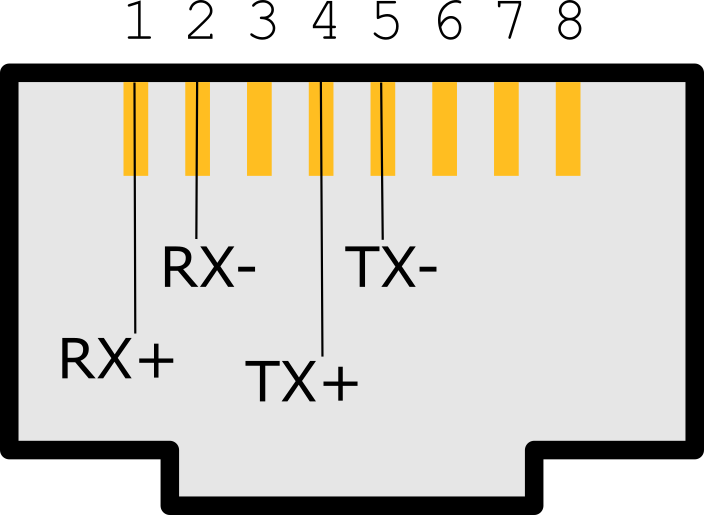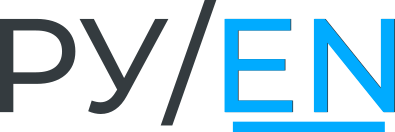E1 configuration EcoRouter Documentation / E1 configuration
E1 is a digital data and voice transmission method based on time-division multiplexing. Stream E1 frame consists of 32 time intervals from 0 to 31 which are called timeslots. Each timeslot, in its turn, contains 8 bits of information. For one second, 8000 frames are transmitted, therefore, the data transfer rate on the E1 channel can reach up to 2048 Kbit/s.
Zero timeslot serves for signaling. It transfers control information. Thus, 31 timeslots are used to transfer data (from 1 to 31). This operation mode is called a structured (framed) mode. However, a zero timeslot can also be used for data transmission, such an operation mode is called unstructured (unframed) mode. In a structured mode, timeslots which will be used for data transfer must be specified. When all the remaining available timeslots are used, the record will look as 1-31. The value of the timeslots used on devices connected by one transmission line must be the same.
There are two modes for stream testing: loopback local and loopback networkline. The first one is used for local E1 port testing, the second one is used for backbone between equipment testing.
There is an error tracking mode, called CRC-4. If this mode is enabled, the checksum is calculated on sending and on the remote side. If the received and calculated sum coincides, then the frame is considered undamaged. The checksum bit is in the zero timeslot. In order to calculate the checksum, the device groups 16 timeslots, this group is called a multiframe. This mode is optional. The mode must be the same on both sides of the backbone.
The router supports two incapsulation types in the E1 stream: HDLC and PPP. The encapsulation type must be the same on both sides.
E1 ports and channels
Some EcoRouter models support data transmission via first level digital interfaces of European Plesiochronous Digital Hierarchy (PDH) standard also known as E1. The technical specifications of the E1 interface meet the requirements ITU-T G.703/6. The bit rate of the E1 stream is 2048 Kbps. A symmetrical twisted pair with an impedance of 100-120 ohms is used as a physical transmission channel. The 8P8C connectors, also known as RJ45 are used. The figure below shows the line layout on the pins of the connector.

Both unstructured E1 and structured (framed, channelised) streams are supported in accordance with ITU-T G.704. In the latter case, the zero channel interval (timeslot) is used for synchronization, and the maximum bandwidth is reduced to 1984 Kbps. The allocation of individual channel intervals for the formation of channel groups is not supported.
Controller configuring
In EcoRouterOS two objects of configuration are associated with E1 interface - controller and port. Controllers are automatically created in configuration when E1 interface card is connected. If there's no E1 interface card in specific model of EcoRoouter controllers can not be configured.
The E1 controllers have system defined names e1.1 and e1.2.
Use the controller e1.<NUM> command in configuration mode to configure controllers, where <NUM> controller number respectively. Then in context controller configuration mode the configuring commands shown in the table below will be available.
| Command | Description |
|---|---|
clocking {internal | remote} | Choose the synchronization source: internal – internal synchronization source, remote – remote synchronization source |
framing {crc4 | nocrc4 | unframed} | Configure frame structure: crc4 – CRC-4 mode enabled, nocrc4 – CRC-4 mode disabled, unframed – unframed mode enabled |
loopback {local | remote} | Enable loopback mode: local – loopback on local equipment, remote – loopback on remote equipment |
Example of controller configuration.
ecorouter#configure terminal
Enter configuration commands, one per line. End with CNTL/Z.
ecorouter(config)#controller e1.1
ecorouter(config-contr-e1)#framing nocrc4
ecorouter(config-contr-e1)#clocking internal
Use the command show controller and the show controller e1.<NUM> in administration mode to display information about all controllers and specific controller respectively.
ecorouter#show controller e1.1
Controller e1.1
Clocking source: internal
Framing: no-crc4
Loopback mode: off
1-32 free
E1 port configuring
The ports associated with E1 controllers are created by user. Port name indicates the encapsulation type which will be used for frame transfer. EcoRouter supports two types of encapsulation - HDLC and PPP, so port name will look as hdlc.<NUM> for HDLC encapsulation and ppp.<NUM> for ppp encapsulation, where <NUM> is the port number.
Read more about port creating and configuring in the "Types of interfaces. Port" section. The configuration of port is made in context port configuration mode. The respective commands are shown in the table below.
| Command | Description |
|---|---|
timeslots controller e1.<NUM> (1-31) | Assign timeslots from E1 controller, where <NUM> is controller number. For unframed mode timeslot range is not specified |
service instance <NAME> | Specify service instance |
encapsulation untagged | Specify untagged encapsulation. Mandatory command |
connect ip interface <NAME> | Assign interface's IP address to specified port. The interface which is assigned to the port with HDLC encapsulation must have MTU of no more than 1486 bytes. |
Example of PPP port configuration.
ecorouter#configure terminal
Enter configuration commands, one per line. End with CNTL/Z.
ecorouter(config)#interface ppp0
ecorouter(config-contr-e1)#ip address 10.1.1.1/30
ecorouter(config)#interface ppp0
ecorouter(config)#port ppp.0
ecorouter(config-port-ppp)#timeslots controller e1.1 1-31
ecorouter(config-port-ppp)#service-instace unit0
ecorouter(config-service-instance)#encupsulation untagged
ecorouter(config-service-instance)#connect ip interface ppp0
Use the show port command and the show port <NAME> command in administrative mode to display information about all ports and specific port respectively.
ecorouter#show port ppp.0
PPP port ppp.0 is up [10.1.1.1/30]
PPP authentication is off
MTU: 17940
Input packets 0, bytes 0, errors 0
Output packets 0, bytes 0, errors 0
Service instance ppp.0.unit0 is up
ingress encapsulation untagged
ingress rewrite none
egress encapsulation untagged
egress none
Connect interface mppp0 symmetric
Input packets 6, bytes 588
Output packets 26, bytes 1484
Authentication configuring
For PPP encapsulation an autentication on the remote side can be configured. The EcoRouter uses CHAP protocol for authentication. The authentication mode is configured by context port ppp or mppp (Multilink ppp) configuration command. For ppp port authentication is confugured on the combined Multilink port.
Use the authentication chap hostname <LOCAL-NAME> username <REMOTE-NAME> password <PASS> command to configure authentication. Here <LOCAL-NAME> is the name of local device (router hostname or any othe name), <REMOTE-NAME> is the remote device name, <PASS> is the password of the connection.
See an example of PPP port configuration.
ecorouter#configure terminal
Enter configuration commands, one per line. End with CNTL/Z.
ecorouter(config)#interface ppp0
ecorouter(config-contr-e1)#ip address 10.1.1.1/30
ecorouter(config)#interface ppp0
ecorouter(config)#port ppp.0
ecorouter(config-port-ppp)#timeslots controller e1.1 1-31
ecorouter(config-port-ppp)#authentication chap hostname Bob username Clara password supersecret
ecorouter(config-port-ppp)#service-instace unit0
ecorouter(config-service-instance)#encupsulation untagged
ecorouter(config-service-instance)#connect ip interface ppp0
Use the show port command and the show port <NAME> command in administration mode to display information about all ports and about specific ports respectively.
ecorouter#show port ppp.0
PPP port ppp.0 is up [10.1.1.1/30]
PPP authentication is on
protocol: chap
hostname: Bob
username: Clara
MTU: 17940
Input packets 0, bytes 0, errors 0
Output packets 0, bytes 0, errors 0
Service instance ppp.0.unit0 is up
ingress encapsulation untagged
ingress rewrite none
egress encapsulation untagged
egress none
Connect interface mppp0 symmetric
Input packets 6, bytes 588
Output packets 26, bytes 1484
Multilink PPP configuring
To increase throughput and provide fault tolerance, two ports ppp into one logical Multilink PPP port can be combined. Such a port will be called mppp.<NUM>, where <NUM> is a port number. To create an mppp port, configure two ppp ports and add them to one mppp port.
Use the port mppp.<NUM> command in configuration mode to create Multilink PPP port, where <NUM> is a port number. The use the bind ppp.<NUM> command in configuration multilink port mode to add ppp ports to created Multilink, where <NUM> is a port number.
See the exampl of Multilink PPP configuration.
ecorouter(config)#interface mppp0
ecorouter(config-if)#ip address 10.3.3.2/30
ecorouter(config-if)#exit
ecorouter(config)#port ppp.0
ecorouter(config-port-ppp)#timeslots controller e1.1
ecorouter(config-port-ppp)#port ppp.1
ecorouter(config-port-ppp)#timeslots controller e1.2
ecorouter(config-port-ppp)#exit
ecorouter(config)#port mppp.0
ecorouter(config-port-mppp)#bind ppp.0
ecorouter(config-port-mppp)#bind ppp.1
ecorouter(config-port-mppp)#service-instance unit0
ecorouter(config-service-instance)#encapsulation untagged
ecorouter(config-service-instance)#connect ip interface mppp0
Use the show port mppp.<NUM> command in administration mode to display information abaut ports, where <NUM> is a port number.
ecorouter#show port mppp.0
Multilink PPP port mppp.0 is up [10.3.3.2/30]
PPP authentication is off
PPP port ppp.0
PPP port ppp.1
MTU: 17940
Input packets 0, bytes 0, errors 0
Output packets 0, bytes 0, errors 0
Service instance mppp.0.unit0 is up
ingress encapsulation untagged
ingress rewrite none
egress encapsulation untagged
egress none
Connect interface mppp0 symmetric
Input packets 0, bytes 0
Output packets 3, bytes 126





